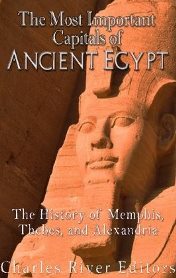| Main » Ad Board » ДРЕВЕН ЕГИПЕТ И АФРИКА » Политическа история |
| 19.04.2020, 12:44 | |
Мемфис, наричан от египтяните Инебу-Хедж (Белите стени) , Анх-Тауи (Животът на Двете земи) и Мен-Нефер (Пребъдващ и прекрасен) е столица на Египет през епохата на Ранното и Старото царство (XXVII-XXI в. пр.н.е.). Нейното величие, отразено в пирамидалния комплекс край Гиза и Сакара е запазило паметта за царете-богове, управлявали първата обединена национална държава на Земята. - на английски език, от MEGA, формат PDF.Сваляне с ляв бутон (downloading by left button) и после през бутона Download. - на английски език, от Google Docs,формат PDF. Сваляне с ляв бутон (downloading by left button) от страницата на предоставящия сървър, после през бутона стрелка надолу/after by down arrow button.
| |
| Views: 862 | Placed till: 19.05.2020 | Rating: 0.0/0 | |

